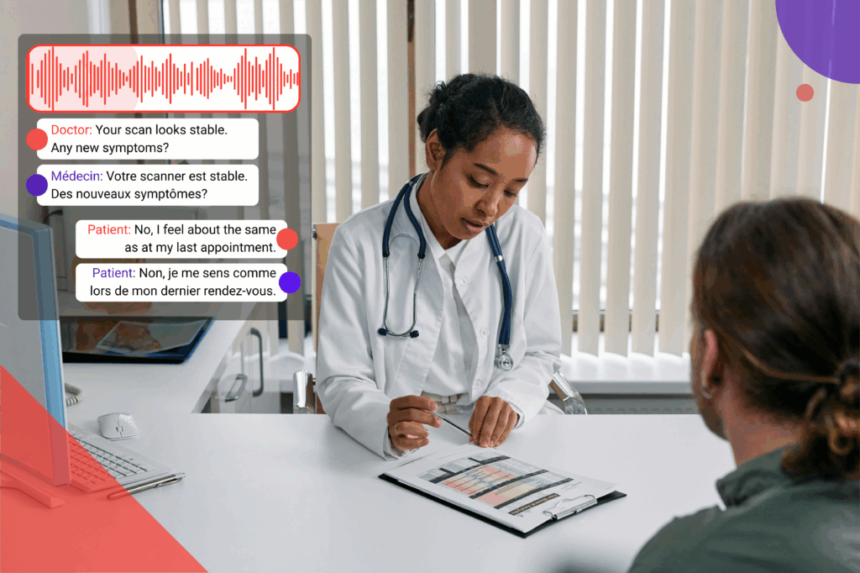Ambient scribe AI is transforming how clinical documentation is created. But when a system built for English-speaking doctors is expected to perform just as well across global healthcare settings, simple translation is not enough.
At iMerit, we support ambient scribe innovators as they expand into new languages and markets. A recent project with a client entering the European healthcare space highlighted one of the most important lessons in multilingual medical AI: linguistic accuracy and clinical appropriateness are not the same thing.
Reaching Local Expertise Globally
The first challenge our client faced was accessing specialized talent in each target market. Even well-funded AI teams can struggle to reach into local resource pools, especially when they need medical transcriptionists, coders, or annotators fluent in both the language and the clinical standards of that region.
At iMerit, we addressed this by sourcing and curating teams across the required geographies, using our Scholars platform, which brings together experts from a wide range of domains and regions. This allowed us to combine client-specific language proficiency, domain expertise, and familiarity with local clinical workflows into one coordinated team. As a result, we helped our client move beyond generic multilingual support to deliver truly localized and clinically credible solutions for each market.
Scaling English Workflows for Global Languages
Our client had developed a strong ambient scribe tool based on English-language data, workflows, and expertise. It was effective, fast, and well-received by providers. But when they decided to support additional languages, including German, they faced unexpected hurdles.
We supported their expansion by sourcing and managing medical experts in multiple languages. We also adapted their existing English workflows and guidelines to fit each target language. However, while the implementation went smoothly from a process standpoint, we soon encountered feedback that changed the direction of the project.
Why Clinical Language is Not One-Size-Fits-All
In the case of German, our transcriptionists and medical experts quickly identified a gap. While the translated instructions were technically correct, they did not align with how clinical documentation is actually written in German medical settings.
Unlike English, which tends to have a standardized approach to clinical reporting, languages like German require a specific grammatical structure that is formal, domain-specific, and not widely used outside the medical field. This includes the use of the subjunctive mood for reported speech, which is essential for maintaining neutrality and precision in clinical documentation. Fluency alone was not enough. Annotators needed to be trained and comfortable with a particular style of clinical grammar to ensure quality and local relevance.
This is not unique to German. Across languages, clinical expression is shaped by culture, regulation, medical training, and professional norms. These factors must be understood and reflected in both the data and the people producing it.
Our Solution: Systematic Localization at the Operational Level
In response, we worked with the client to revise the annotation guidelines and build in culturally and linguistically appropriate standards for German documentation. But we also went further.
We developed a custom qualification process that tested not just language fluency but familiarity with the grammar, tone, and structure of clinical writing in German. Our talent acquisition team now applies this approach across languages. For each market, we define what constitutes clinically appropriate communication and tailor our talent screening accordingly.
This level of localization is now baked into how we support multilingual projects. Whether the language is French, Japanese, Chinese, or Arabic, we work to understand the documentation context and build teams with the right mix of language, medical, and cultural expertise.
What This Means for Multilingual Ambient Scribe Projects
If you’re building ambient scribe tools for global use, here are three key lessons we’ve learned from real projects:
- Language alone is not enough. Clinical accuracy depends on a deep understanding of how documentation works in each region and language.
- Custom testing and team curation are critical. We evaluate not just general skills, but task-specific proficiency based on medical norms and writing conventions in each language.
- Guidelines must be localized, not just translated. We collaborate with clients and native experts to ensure that workflows make sense in context and can evolve with feedback.
The Bigger Picture: From Multilingual to Multi-Market AI Readiness
Many AI teams focus on training models for multilingual support. But the actual readiness of your ambient scribe tool to enter a new market depends on your expert-in-the-loop operations.
That is where iMerit comes in.
With experience across more than 26 languages and a track record of success in complex medical annotation workflows, our teams deliver transcription, summarization, localization, coding, and validation with both linguistic and clinical precision.
Whether you are launching in Europe, expanding into Asia, or supporting multilingual patients in North America, we help you move faster without sacrificing quality or compliance.
Closing Thought: Localization Is a Human-Centered Process
Your ambient scribe AI may be powered by models, but the quality of its performance depends on the people shaping the data. The difference between “works in Spanish” and “works for Spain” is a matter of grammar, clinical style, and workflow design.
At iMerit, we turn these complexities into structured, scalable solutions. Because for ambient scribe AI to be truly global, it must be locally fluent, linguistically, clinically, and culturally.
Let’s Build Better Scribe AI Together
Whether you’re building a general-purpose medical LLM or launching a specialty scribe product, iMerit can help you move from research to reality, with the people, tools, and data pipelines that make ambient AI viable.
Our multilingual workflows are powered by Ango Hub, which enables centralized project oversight, integrated QA, and flexible guideline management tailored to each language and market. This ensures your scribe AI isn’t just functional, it’s clinically fluent and deployment-ready.
Download your free multilingual ambient scribe dataset
Schedule a Demo or Contact Us to explore how we can help you scale ambient scribe AI with clinical precision.


























